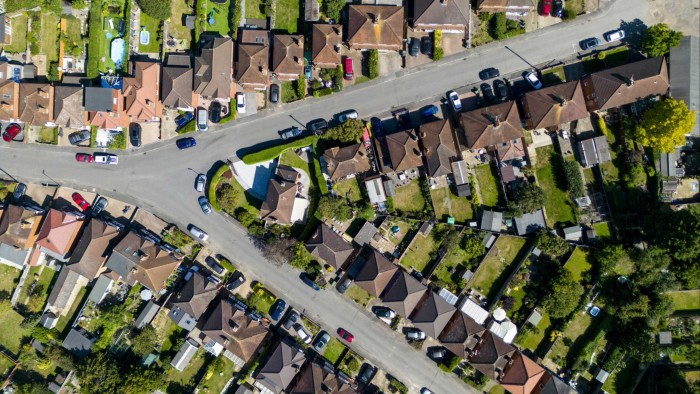Stay informed with free updates
Simply sign up to the Property sector myFT Digest — delivered directly to your inbox.
The number of rental properties coming on to the UK market fell sharply for the 11th straight month in June, according to a leading property survey that highlights a squeeze on the number of homes to let.
The Royal Institution of Chartered Surveyors said that “landlords continue to leave the sector”, with its measure of “landlord instructions” reporting a score of minus 21 points in June in an indication that more estate agents have seen a decrease in rental listings than an increase.
Although this was higher than the score of minus 34 recorded in May, the measure has been negative since August 2022, and has been at a double-digit negative for the past 11 months.
Falling availability of rental properties is driving expectations that rents will rise in the coming months.
Separately, data from the Bank of England showed that only 8 per cent of mortgages were for buy-to-let properties, a drop of 0.3 percentage points compared with a year earlier and one of the lowest levels in recent records.
Buy-to-let mortgages accounted for an average of 13.3 per cent of total UK mortgages in the decade to 2022.
“The pattern of landlords exiting the market continues with very few new investor buyers,” said Stan Shaw, director of the estate agency Mervyn Smith in Surrey.
“The market remains inflated and competitive, but due to a lack of supply rather than intrinsic strong demand,” he added.

Rics reported that a quarter of those it surveyed expected rents to rise over the next three months, though this was lower than 43 per cent last month.
Among the uncertainties facing landlords, some of the estate agents mentioned the renters’ rights bill, which aims to abolish “no-fault” evictions and strengthening tenants’ protections.
Adam Parkinson, of Countrywide Surveyors in Yorkshire, said: “Several longtime landlords have recently sold citing concerns with the recent legislation and particularly that they would struggle to evict unruly or unreliable tenants.”
Landlords have also faced higher mortgage costs combined with the phasing out of mortgage interest relief since 2020. Taxation has also increased, with rising stamp duty taxes on second homes in 2016 and 2025.
Some economists said the chancellor could extend national insurance contributions to landlords in the autumn, to help fill a possible gap in the public finances.

Tenants have been under pressure over the past three years as their costs rose. Despite declining from a record high of 9.1 per cent in March 2024, rents rose at a steady annual rate of 7 per cent in May, according to official data.
The Rics survey also found that expectations for sales had improved, while measures of buyer inquiries and agreed sales have stopped falling, indicating that the wider property market is stabilising.
The house price indicator recorded minus 7 in June, unchanged from May.
Although prices are expected to fall in the coming three months, 24 per cent said they anticipated price increases in the coming year.
Tarrant Parsons, Rics head of market research, said the earlier distortion caused by transactions being brought forward ahead of the stamp duty changes implemented from April 1 now appeared to have largely dissipated.
“The UK residential market appears to be entering a more settled phase, with demand showing signs of stabilising following a period of volatility,” he added.



